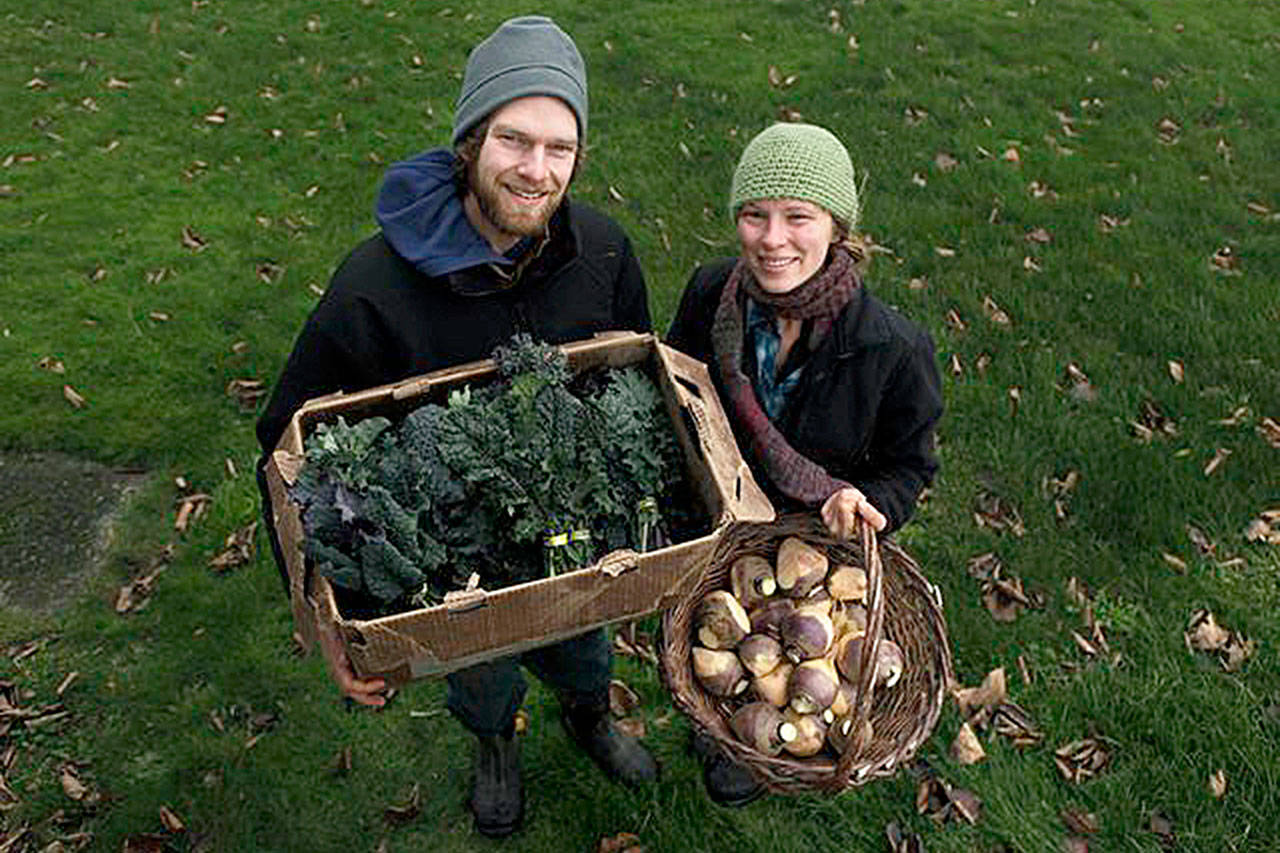Although grocery stores will always be the place to buy food, not all households will get their produce from the store this summer.
In fact, more and more people seem to source their produce directly from their local farmer by buying Community Supported Agriculture (CSA) boxes. And South Whidbey has options to choose from.
CSA is a way for consumers to buy locally-grown seasonal produce without the numerous middlemen food typically goes through before reaching the customer. It’s essentially a farm share program. Customers go directly to a farmer of their choosing, typically small family-operated farms, and prepay to have boxes filled with fresh produce set aside for them throughout the harvest season. Although the methodology varies, farmers regularly fill each box with enough food to fill the stomachs of an entire family for about a week. For the participating customers, CSA represents an alternative to the industrial food system without having to grow their own crops.
“More and more people around the world seem to be interested in this sort of thing,” Shipki Farms Organics owner Josette Hendrix said. “It’s happening as people become more conscious of the fact that what you eat actually has a huge impact on your health. The industrial production of food isn’t healthy.”
Most of Whidbey’s CSA farms are located on the South End: Deep Harvest Farm in Freeland, 12 Birches Farm and Ebb Tide Produce in Bayview, Full Cycle Farm and the Organic Farm School in Maxwelton Valley and SkyRoot Farm and Shipki Farm Organics in Clinton. There are three in Central and North Whidbey. Each farm does it differently, as the season, the payment and diversity of produce varies.
According to Deep Harvest Farm co-owner Nathaniel Talbot, there’s an original CSA model that has since developed into a myriad of variations. The original entailed a group of consumers pooling funds together to pay a farmer a salary to harvest produce for the group. Today, Talbot says some farmers conduct business like a market, in which customers pick and choose from a variety of produce as they please, while other farmers let customers pick which produce they’d like throughout the season before planting the seeds.
“Everything is across the board, but I’d say the most common way is to pay at least part of the value up front,” Talbot said. “That’s how we do it, and we allow customers to pay in installments throughout the season.”
A share typically costs $400-$500, or around $25 a week, depending on how long a farm’s CSA season is. Some farms will have CSAs in the winter, although the diversity of produce is limited. Talbot says CSA accounts for roughly one-third of Deep Harvest Farm’s annual income. He says that’s probably a larger amount than most other participating farms, since most farmers don’t put all their eggs in one basket due to the high risk associated with farming. He guesses other farms earn around 25 percent or less through CSAs.
Talbot adds the CSA model also helps take a large amount of risk off farmers’ shoulders. He says paying a fraction of the share up front reduces the “inherent risk in an incredibly risky business,” where a harvest could bust in any given season. That isn’t the case in the industrial food system, he says, where a litany of middlemen are taking a bit of the profit while not taking any of the risk off their suppliers’ shoulders. Proponents of CSA say it’s a way to support local agricultural systems.
“Sharing part of the risk is part of the original CSA model,” Talbot said. “It works really well with the financial flow of the season.”
Of course, there are some cons to CSAs for both the consumer and the farmer. Depending on how a farm operates its CSA program, customers may not have much flexibility in terms of available produce, according to Organic Farm School Executive Director Judy Feldman. If a farm compiles a list of vegetables to grow prior to harvest season, there may not be a wide selection outside of those requested vegetables during the harvest season. Feldman says that on the farmer’s end, CSAs require extensive long-term planning and can at times leave an abundance of extra produce. The additional work drives many farmers to no longer offer CSA shares after a few years, but Feldman says it’s ideal for farmers who need cash flow at the beginning of the year.
Hendrix says more farms seem to be doing CSA on Whidbey, although she says it’s hard to tell if consumers are getting on board. Talbot believes CSA has generally grown across the country in recent years as consumers grow more conscious of what they put in their body. Even if more people want their produce from CSAs, these farmers say they don’t want to ramp up production in order to keep quality high. But with more farmers participating, that doesn’t seem to be an issue yet.
At its core, CSA is a personal model where the consumer gets to meet their local farmer. In order to pick up their week’s worth of vegetables, customers stop by the farm and see where the magic happens. Talbot says that’s important in this day and age, and helps foster community spirit and keep the flow of money local. The veggies also just taste better.
“CSA is great because I think it’s the best way to directly support the local food system, by giving your money directly to the farmer to help share a bit of that inherent risk,” Talbot said. “It also doesn’t hurt that the quality, nutritional value and the taste of the produce will be head and shoulders above supermarket vegetables.”



